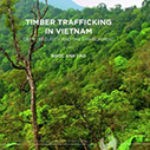Understanding Sex For Sale: Meanings And Moralities Of Sexual Commerce

Editors: May-Len Skilbrei and Marlene Spanger
Publisher: Abingdon, Oxon ; New York, NY: Routledge. 2019. 232p.
Reviewer: Howard Campbell | July 2019
This volume is the product of the European collaborative working group on “Sex, Money, and Society.” The editors frame the book in historical, spatial and political terms. Edited volumes are notoriously uneven in quality and this book is no exception. All authors discuss commercial sex, but with different methods and theories, and varying degrees of success. Most of the case studies are concerned with prostitution in Europe.
What is sometimes called “the oldest profession” has been defined, construed and valued in myriad ways over time. These moralities and meanings have shifted and evolved, but the nexus of sex and money is invariably a source of great cultural interest and political control. Power is central to any discussion of commercial sex, and many of the authors invoke Foucauldian perspectives. Patriarchy forms the substrate of most scholarly studies of prostitution, but the editors avoid reducing commercial sex to a mere question of misogyny. Likewise, the editors transcend a narrow view of prostitution as only about money. There is also much discussion of various conceptions of intimacy, affection, and even love that intersect with paid sex.
The historical chapters deal with how the West has dealt with sexual commerce from the Middle Ages to the present. The early Christian Church viewed wayward male sexual desire as a problem for which prostitution was a sinful but viable and tolerable solution. Contemporary radical feminists also target male sexuality as the cause of prostitution, and as a social problem resolvable through criminalizing sexual consumers rather than sellers, a policy common in Scandinavia. State surveillance of sexual commerce has increased in the last two centuries, which has led to restrictive laws designed to control female bodies and undertake policies of eugenics and sterilization of prostitutes. By the end of the twentieth century, however, sexual biopolitics evolved in Denmark and elsewhere to the point that prostitutes were no longer viewed as threats to the gene pool, but rather as a social welfare problem, although stereotypes of female prostitutes as failed women persisted. An especially interesting chapter explores the spatial distribution of the sex business and the ways space constructs urban dwellers’ understandings of sexual service providers in the red-light district of Catania, Italy. The San Berillo sex zone has undergone numerous transformations from its early image as a vice-ridden ghetto to its modern incarnation as a part of the consumerist service economy in which various immigrant groups, transgender sex workers and others struggle to control and make claims on a hotly contested urban area.
The ethnographically-oriented chapters cover issues that include the ways intensive mothering functions as a contested script for street prostitutes, how modern male sex consumers define their sexuality vis-à-vis partners and sex workers, complicated ideas about intimacy and money among female sex tourists, and the perspectives on sex and the work of Chinese masseuses/prostitutes.
The policy section contains a fascinating case study of how the arrival of Nigerian immigrant prostitutes to Norway, and their occupation of hitherto off-limits locations for sex work, have challenged Norwegian notions of race, space, and tolerance. Another fascinating chapter entitled “Why can’t men be sex slaves?” challenges the assumptions of anti-sex trafficking campaigns and problematizes discourses of victimization or a unitary sex worker subject. Finally, a Russian case study illustrates how the state and its police agents, rather than seeking justice or protection for sex workers, actually foster injustice and exploitation.
Overall, the volume works well as an introduction to the complex political, social and geographic dimensions of commercial sex and the diverse meanings, associated moral codes, and enactments of sex for sale. Some of the chapters are far more compelling than others, and a few are riddled with bad translations and poor English grammar. Others lack ethnographic depth. The volume may be of more use to graduate students than lower-level undergraduates who could struggle with the heterogeneity of the volume. A concluding chapter might have helped pull together the diverse strands of theory, data, and policy. Still, the book is a valuable contribution to social science research on the commercial sex industry.
Howard Campbell, Professor of Anthropology, University of Texas-El Paso, El Paso, Texas


